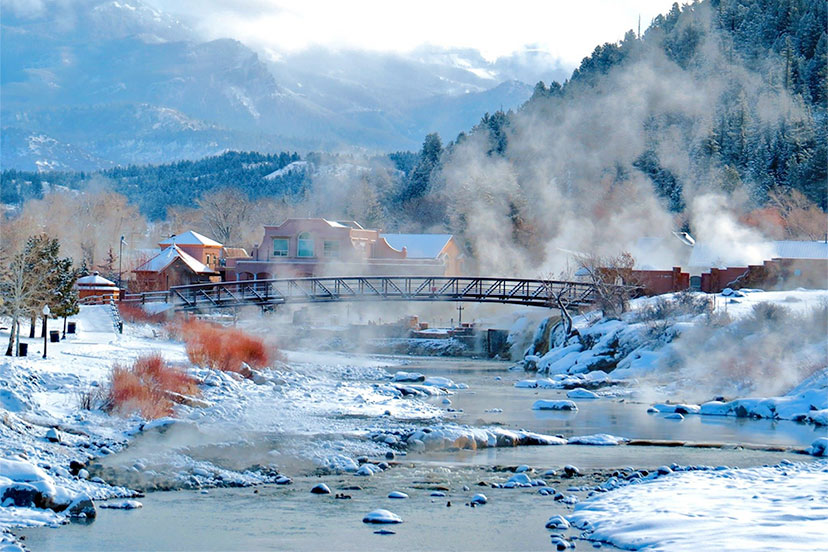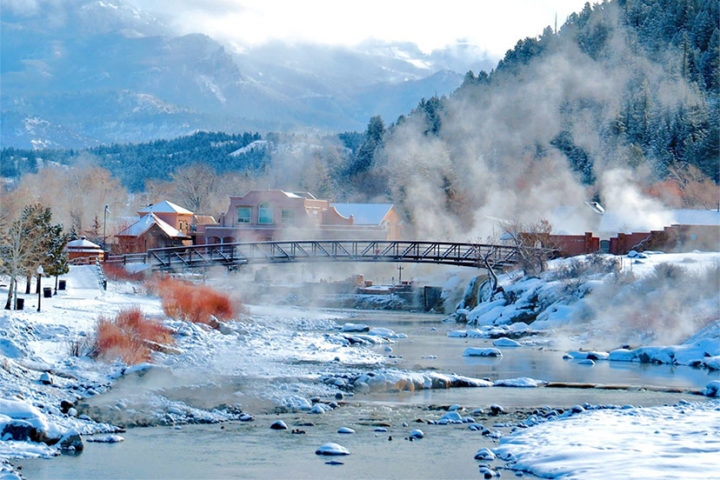Various and sundry organizations have played a role in the ongoing ‘development’ of Pagosa Springs… or have attempted to play such a role. We’ve often seen our our limited community resources exploited successfully… or, sometimes, wasted.
I hope to dig a bit deeper into the progress made by the Pagosa Springs Community Development Corporation (PSCDC) in tomorrow’s installment.
But as I write this ‘Part Three’ I have just returned from an interesting meeting of the Pagosa Springs Area Tourism Board, a group of volunteers who meet regularly to spend up to $1 million a year subsidizing Archuleta County’s tourism industry.
The subsidies have been funded by the tourists themselves, paid via the Town of Pagosa Springs 4.9% Lodgers Tax and Archuleta County’s 2% Lodgers Tax. Over the past 15 years, the industry supports have amounted to over $9 million.
The Tourism Board meeting last night had only one item on the agenda.
NEW BUSINESS
1. Proposed Lodging Tax Related Ballot Measures
The discussion centered around two proposed ballot measures that we discussed at considerable length in a previous Daily Post editorial: “Freeing Ourselves from the Tourism Trap”
These two ballot measures were proposed to the Pagosa Springs Town Council on October 21, and were discussed at considerable length at that meeting.
The two ballot proposals would address Pagosa’s current housing could be concisely summarized like this:
1. Reallocate 50% of the Town’s 4.9% Lodgers Tax to create a new funding stream dedicated exclusively to workforce housing.
2. Establish a new excise on Short-Term Rentals (STRs) and dedicate the new funding stream exclusively to workforce housing.
The justification for using a tourism tax to address the workforce housing crisis derives from the fact that about 10% of the residential homes in Archuleta County have been converted — over the past decade — into mini-motels, and this has helped bring about a housing shortage that has driven home prices and rental rates through the ceiling.

The housing crisis has resulted in, or been accompanied by, an apparent loss of population over the past year or two, a reversal of our steady population growth between 2012 and 2019. The US Census pegged the county population at 14,029 in 2019… and estimated only 13,359 residents in 2020.
The Tourism Board meeting last night featured a speech by Tim Wolfe, the new director of the Colorado Tourism Office, who just happened to be passing through Pagosa. Mr. Wolfe summarized the current direction of state tourism efforts, which apparently are now focused mainly on getting Europeans to start visiting Colorado once more, now that the COVID pandemic is coming under control. (Except, it’s not actually under control yet, in Colorado, if we are to believe the news media.)
The Board then entered into a lengthy discussion about how much money the tourists ought to be contributing to help solve the local housing crisis.
Re-allocate some of the Lodgers Tax?
Ask the voters to approve an excise tax on STRs?
County Commissioner Ronnie Maez spoke in favor of local governments getting financially involved in solving the crisis, except that he felt our local residents ought to be providing the funding for the effort, through an increased sales tax.
I couldn’t tell how many of the volunteers around the table actually believed that Archuleta County residents would vote to burden themselves with higher taxes to solve a problem that might have been caused largely by the tourism industry.
I certainly can’t see that as a viable ballot measure, with so many local workers already burdened by high housing costs. But I don’t claim to be an expert in taxpayer appetites.
Board chair Julian Caler noted that the Tourism Board’s proposed budget for 2022 includes a line item totaling $500,000.
The line item is labeled “Infrastructure”. But Mr. Caler suggested that it could be used to address the housing crisis.
Mr. Caler was addressing his comments to me, personally.
“We’ve made a statement, that we are onboard with helping with housing. We’ve put an exorbitant amount of money into our infrastructure budget — something that we’ve never done before.
“I don’t know what else is saying that we’re not onboard? Like, we’ve already put it into play. But we need a plan of action, before we just vote on giving you $500,000.”
I reminded to Mr. Caler that the money is not for me.
“I know it’s not for you. But you’re part of getting something rolling. But we need to see something, before we can say, yep, this is for housing.”
A few minutes later, Board member Michael Whiting made a suggestion, regarding the $500,000 ‘infrastructure’ line item.
“What I’d like to suggest, as an advisement to the Town Council Board of County Commissioners, from the Tourism Board — since we already allocated the $500,000 — that we recommend that they allocate those funds for the express purpose of workforce housing…
“I will make that as a motion. Continent upon some kind of a plan, even if it’s an outline of a plan, for how those monies will be used for the community. That’s my motion.”
The motion died, for lack of a second.
Although there were six board members in attendance, all of whom had been speaking about supporting the need for workforce housing, no one was willing to second Mr. Whiting’s motion. So the meeting concluded without any definite pledge from the Tourism Board to spend any of the $1.2 million in next year’s budget on solving the housing crisis.
All is not lost, however. The final budget decisions are made by the Town Council — and the Council could themselves specifically earmark the $500,000 ‘infrastructure’ line item for housing efforts.
If the Council wanted to.
We have no indication, yet, that the Council has an interest in making such a decision. They will be discussing the 2022 budget tomorrow, Thursday October 28, at Town Hall, starting at 5pm. The Tourism Fund budget is the first item on the agenda.


